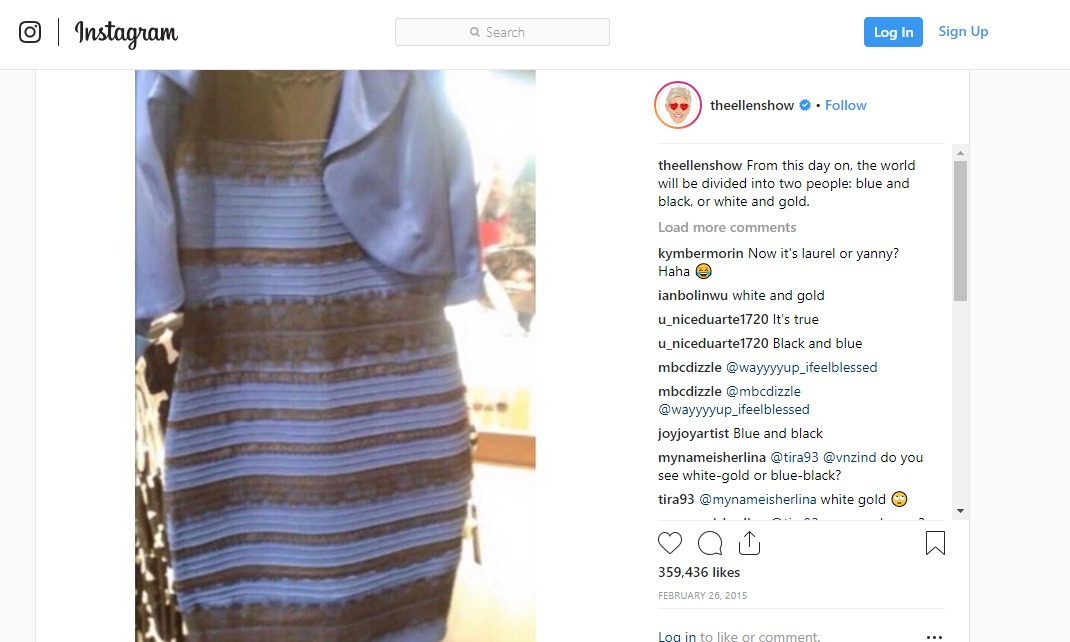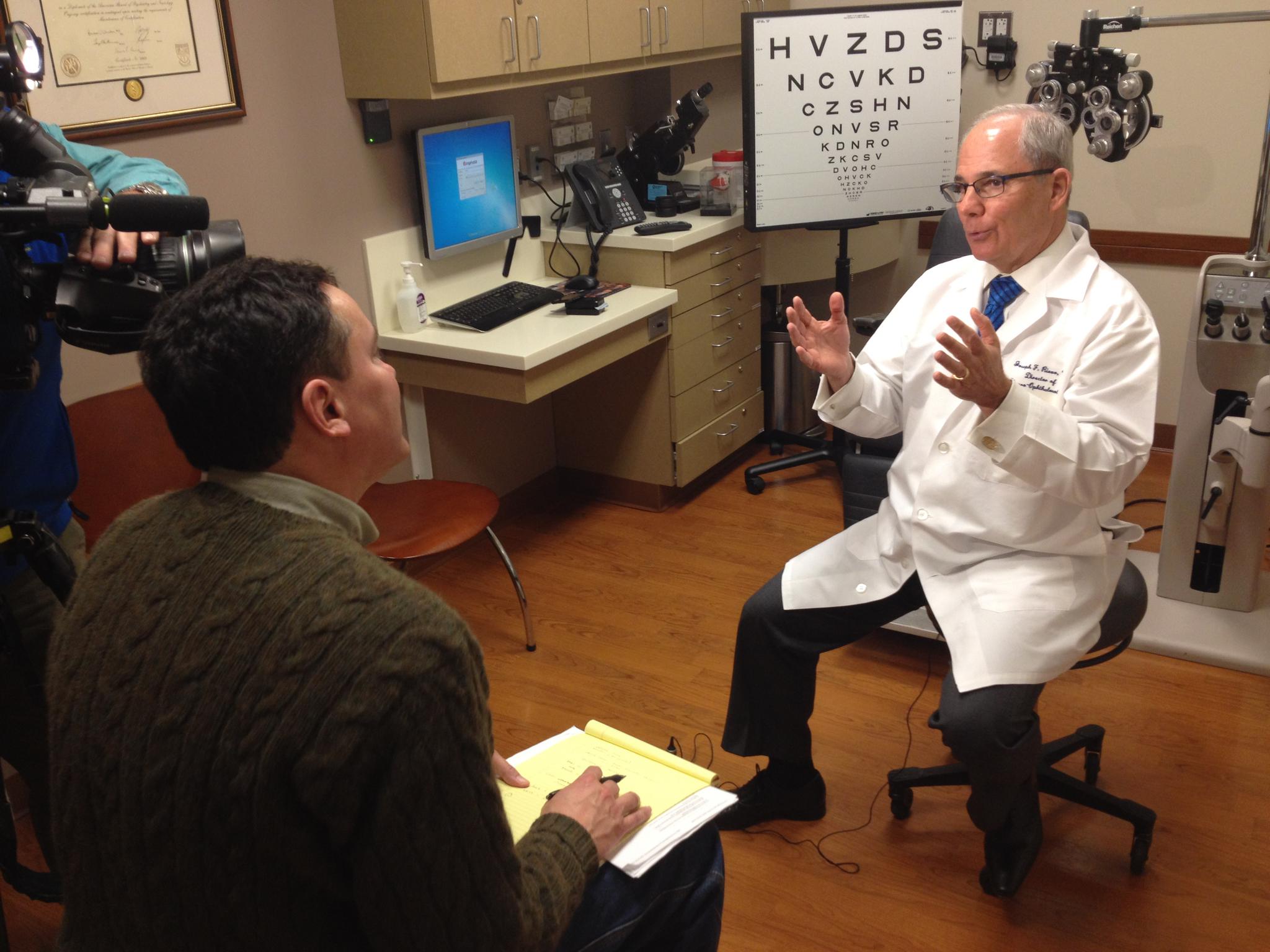
Dr. Joe Rizzo Explains Science Behind #TheDress

Musings Blog (Mass. Eye & Ear Infirmary)
Black and blue or gold and white? In late February, this was the burning question on the minds of millions as an innocent Tumblr post about a dress color went viral on social media. On the morning of Friday, February 26, the water cooler buzz was all about #TheDress – not Middle East diplomacy, Russian political assassinations, or U.S. health-care policy.
“With all the serious challenges we’re facing these days, I think that people are looking for a little distraction,” said WBZ-TV reporter Ken McLeod, trying to explain how such a trivial matter caught fire on social media. McLeod was on site that Friday to discuss the science behind #TheDress with Joe Rizzo, M.D., Director of Mass. Eye and Ear’s Neuro-Ophthalmology Service.
But before we get to Dr. Rizzo’s thoughts on the matter, a little background is in order: In the waning days of February, a young Scot, Caitlin McNeil, couldn’t figure out the color of a dress worn by a bride's mother at a wedding, so she posted a picture to her Tumblr account and asked her followers what they thought.
What followed was the kind of buzz that Madison Ave. spends billions to generate. The question soon moved beyond Tumblr to other social media channels, and pop-culture stars Taylor Swift, Justin Bieber and even a Kardashian chimed in, causing “a dress” to become "#TheDress.”
 Dr. Joe Rizzo explains the mystery of "The Dress" to WBZ-TV reporter Ken McLeod at Mass. Eye and Ear Infirmary.
Dr. Joe Rizzo explains the mystery of "The Dress" to WBZ-TV reporter Ken McLeod at Mass. Eye and Ear Infirmary.
So on Friday morning, Mass. Eye and Ear’s Public Affairs Office was swamped with calls for a medical professional who could explain this vexing optical illusion. Fortunately, Dr. Rizzo bravely stepped into the void at the last moment, and spoke with WBZ-TV News and National Geographic.
In speaking with National Geographic reporter Karen Weintraub, Dr. Rizzo explained that it's "the wavelengths of light reflected into the back of the eye that produce the sensation of color. . . . The light that reaches our eyes is affected by the material we’re looking at, the ambient light bouncing off the material and some subtle personal differences.” (Read the National Geographic article.)
While sitting with McLeod for a time, Dr. Rizzo explained that “The image hits an intersection in the subconscious mind between physiology and perception. Yes it is an optical illusion.” (Watch Dr. Rizzo's WBZ-TV interview.)
As for me, this whole exercise proved to be a terrific lesson about the importance of perspective. We all see things differently, literally and figuratively. On the morning of February 26, I would have bet a week’s pay that the dress was black and blue (which it really is), but as I looked at the image after work with my family on Friday night, it actually appeared to be white and gold. Needing a mental-health break from my horrible commute home, I mindlessly stared at the dress for a few moments, and it actually began to morph from black and blue to white and gold.
Strangest darn thing I’ve ever seen . . .
Post a comment